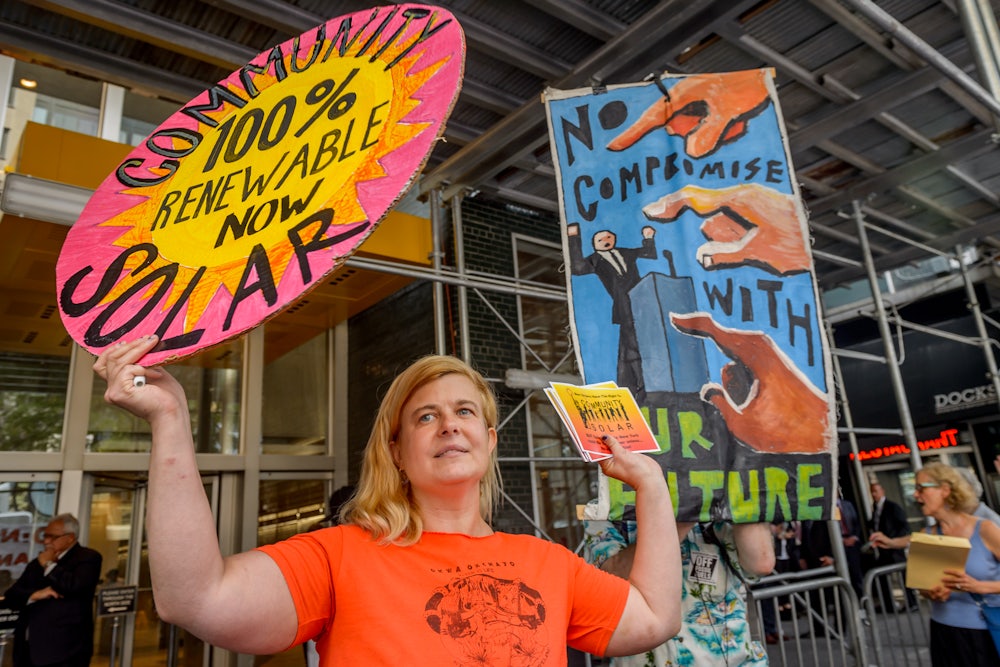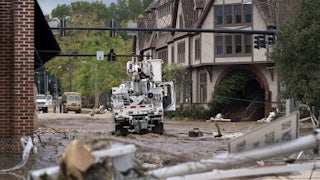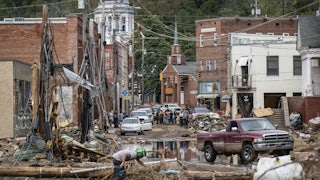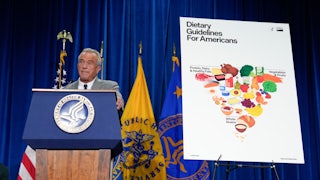In the past few weeks, it has become abundantly clear that no matter who moves into the White House in January, much of the vital work of greening the economy and averting further mass death from the climate crisis must fall to the states. Republican plans to eliminate even any mention of climate change from the executive branch are, obviously, worse than mere Democratic delay. But even amid the twin catastrophes of Hurricane Helene and Hurricane Milton, Vice President Kamala Harris has remained strikingly reluctant to talk about her administration’s considerable environmental accomplishments. She tends to respond to Trump’s crazy statements (for example, in the debate, he opined that renewable energy was “destroying our country”) by murmuring conciliatory sweet nothings to the fossil fuel industry.
We have to hope that state policy can lead the way. Of course, that won’t be easy, either. Even states that have made remarkable recent progress are struggling. Washington’s cap and trade law (passed last year) now faces a ballot challenge funded by a right-wing hedge fund manager who is also seeking to end the state’s income and capital gains taxes. Minnesota’s Republicans are mobilized, if they win enough seats in the legislature, to undo a new mandate signed by Governor Tim Walz last year to fully decarbonize the state’s electricity by 2040.
New York, however, is poised to lead the nation, after passing a historical law last year mandating that the state’s power authority must build publicly funded renewable energy. Still, a draft plan released this week shows that even in New York, with a Democratic governor and legislature, we must step up our game.
In 2019, New York passed the Climate Leadership and Community Protection Act, or CLCPA, requiring the state to reduce carbon emissions by 40 percent by 2030. But the CLCPA didn’t provide a mechanism for reaching that goal. The Build Public Renewables Act, or BPRA, was then passed in 2023 to solve that problem. In the event that the private sector is not on track to decarbonize the economy—a report released last year by the Public Power NY coalition found that, predictably, it is not—BPRA requires the New York Power Authority, an agency established by governor Franklin D. Roosevelt in 1931, to fill in the gap, funding and building the renewable energy that will meet those CLCPA goals.
This week, as Americans all over the country watched their elderly relations in Florida die or lose their homes to climate crisis, with reactionary weirdos who believe wind power causes cancer poised to possibly take the White House, the New York Power Authority released its “Strategic Plan” explaining how the agency would enact the BPRA. The bad news is, power authority’s plan not only doesn’t match the gravity of our moment, but it also doesn’t even comply with the law.
Under BPRA, the power authority should be building 15 gigawatts of energy by 2030, but the agency’s draft plan only imagines 3.5 gigawatts in that timeframe (40 projects in all), leaving New York well short of meeting its legally mandated climate goals. What’s especially scary about that paltry 3.5 number is that renewable projects are complicated, and many fail. The New York Power Authority should be planning for many more than 15 gigawatts, to ensure that we do get to 15, instead of setting its sights at such a small fraction of its mandated target.
The New York Power Authority’s obligation to meet the CLCPA targets is not reflected or even acknowledged in the draft strategic plan. “We cannot afford half-measures,” said Mike Paulson, associate director of the Sane Energy Project and co-chair of Public Power NY, responding to the draft in an interview with TNR this week. “But this draft plan is not even a half-measure. We need NYPA to follow the law.”
There are bright spots in the New York Power Authority’s plan. For all its flaws, the draft still reflects years of pressure from the public—including from Public Power NY. Without that work, there would probably be no plan to build any publicly funded renewable energy at all. The plan also offers serious public investment in a green economy created by and for the working class, including $25 million annually in job training for the renewable energy industry, renewable energy credits for low- and middle-income New Yorkers, and a plan to replace horrifically polluting peaker plants with battery storage facilities. (As a member of NYC-DSA, which is part of the Public Power NY coalition, I have participated in a couple of the coalition’s protests of the peaker plants.) A significant percentage of the projects discussed in the plan are in poor communities, allowing those who need the jobs most to benefit from the energy transition.
But the best thing about this entirely insufficient draft Strategic Plan is that it is only a draft. A period of public comment begins now, and the more public pressure there is on the governor and the New York Power Authority to improve the plan, the more salvageable New York’s energy future will be.
One of the strengths of the BPRA is that extensive public input is required at each step. The process of revising the plan will include five public meetings, plus an online commenting option, so that the public—along with important institutional actors like elected officials, labor unions, and environmental justice groups—can give feedback. (Unions especially, including the New York AFL-CIO, the Building Trades Council, and the IBEW, have come out in strong support of a much bigger renewable energy buildout than the New York Power Authority has proposed.)
New Yorkers support the goal of BPRA overwhelmingly; when it passed, polls showed it was more popular than the governor by a wide margin. For the first time ever, there was a rally last month at the New York Power Authority’s White Plains headquarters—some 70 people (a lot for a rally on a wonky issue in the suburbs in the middle of the workday). The mix of nonsense and evasion from our national leadership, as some of the most beautiful places in the American South are battered by superstorms, is at once enraging and dispiriting. But if New Yorkers can keep up the pressure, we may still be able to get the energy transition—and the just, green, and abundant future—that we all deserve, maybe even providing a model for the rest of the nation.








